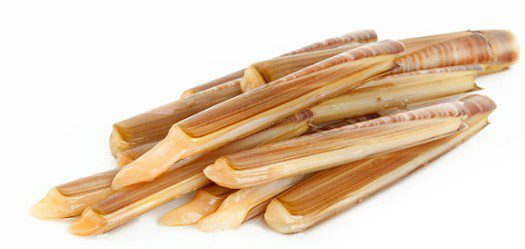

Razor clams are a nutritious mollusk that can provide dogs with important vitamins and minerals such as B12 and B1, protein, omega-3 fatty acids, calcium, selenium, and iron. However, they may also contain contaminants that could be harmful to canine health.
Razor clams offer a range of beneficial nutrients that can support overall canine health, such as vitamins B12 and B1, which can increase energy production and metabolism, as well as essential minerals, protein, and omega-3 fatty acids. Omega-3 fatty acids can also aid cognitive function, reduce inflammation, and improve skin and coat health, while also supporting joint health and reducing the risk of heart disease.
Razor clams pose a number of health risks, due to being filter feeders, and thus accumulating toxins in their environment. Eating them raw or undercooked can increase the risk of contracting food-borne illnesses, as well as the potential for toxic algal blooms to accumulate in the shells. Additionally, their shells are choking hazards for dogs.
To prepare razor clams, first blanch them in boiling water for five seconds, then quickly submerge them in cold water. Cut off the adductor muscle with a knife to remove the membrane, gills, and guts. Rinse them again, and cook by grilling or steaming without seasoning. Cut them into small, bite-sized pieces and serve in moderation as a treat or a meal topper.
Razor clams, also known as jack knife or thumbnail clams, are an edible mollusk species native to coastal areas in the United States, Europe, and northern Asia. In terms of nutrition, razor clams are packed with nutrients that offer an array of benefits for your pup. These include vitamins B12 and B1, protein, omega-3 fatty acids, calcium, selenium, and iron. These help your pup reach optimum health and can support their metabolic, cognitive, joint, and heart health. However, they may also contain contaminants due to their filter feeding habits, and should only be consumed when properly cooked or blanched. You can serve razor clams by boiling them in hot water for five seconds, cooling them and cutting off the adductor muscle to remove the gills and outlet, and then grilling or steaming the clams without seasoning. This can be served occasionally as a treat or mixed into their food for a flavor boost.
If razor clams aren't an option for you, there are plenty of other healthy treats you can feed your pup, such as cooked or dehydrated sweet potatoes, carrots, or apples. Canine probiotics are another great option that can help support their digestive system and promote a healthy gut.
Are razor clams safe for all ages of dogs?
Yes, razor clams are generally safe for all ages of dogs, as long as they are cooked properly. But they should always be given in moderation due to their potential contaminants.
What has been your pet's experience with razor clams? Tell us in the comments!
Whichever ways you decide to include razor clams in your pup's diet, remember to always introduce them gradually. We hope this article has helped you make a more informed decision regarding razor clams for your pup. Treat your pup well and give them a protein-packed and nutrient-rich meal!